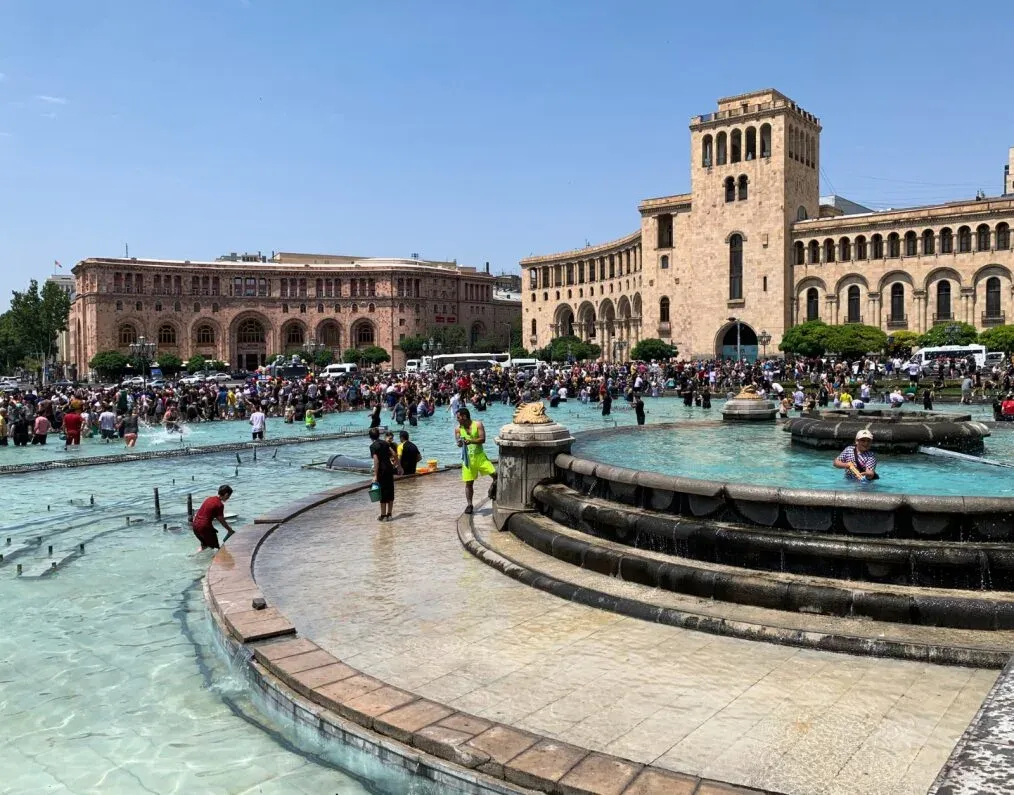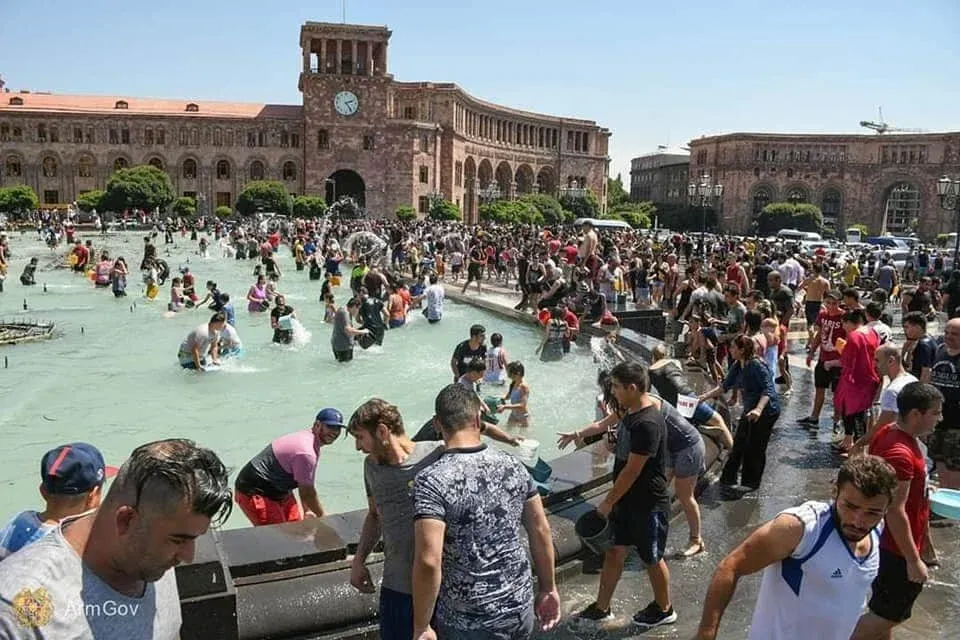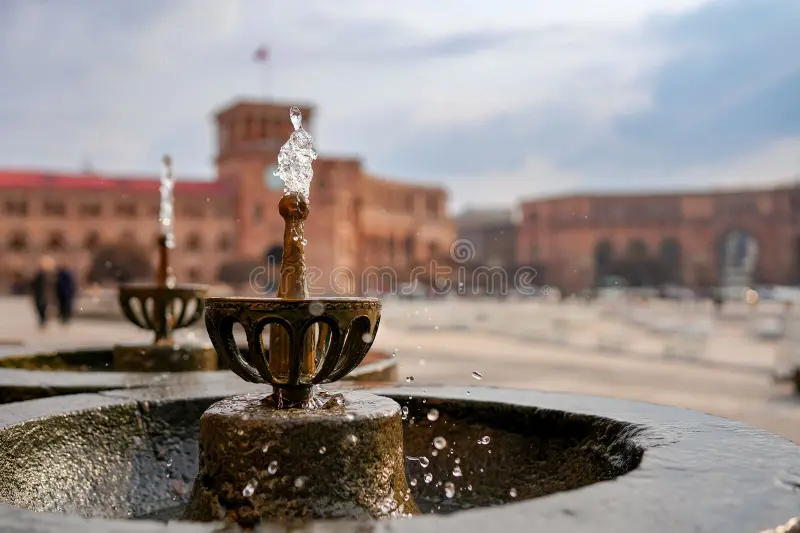Vardavar: The story and tradition behind the festival

Among Armenian holidays, Vardavar is one of the most ancient in origin. Over time, it has come to reflect virtually every aspect of Armenian history and summer festivities: the story of Noah, the legend of Hayk and Bel, the divine figures Anahit and Astghik, ancient Navasard rites, Christian interpretations, and folk beliefs.
Origins in the Story of Noah
According to oral tradition, after surviving the Flood, Noah reached the summit of Mount Masis and descended toward Nakhichevan, marking the beginning of the Armenian month known as Navasard. To ensure that the memory of the Flood endured, Noah commanded his sons to pour water on each other. This early act of water-sprinkling would become the symbolic heart of Vardavar.
In the ecclesiastical calendar, the festival - called the Transfiguration (P’yatsarakerput’yun) - is celebrated 98 days after Easter. Because Easter’s date shifts each year, Vardavar can fall on any Sunday between June 28 and August 1. In some regions, people celebrate it on the Sunday following July 22. The term “Transfiguration” recalls the Gospel account in which Christ revealed His radiant form on Mount Tabor before the apostles Peter, John, and James.
Pagan Roots and the Goddess Astghik
Vardavar predates Christianity and was originally a festival dedicated to Astghik, the Armenian goddess of love. Its name’s meaning is seldom known, and it has no literal connection to the Armenian word for “rose” (vard). The festival arose in pre-Christian times, connected to the harvest season and the worship of water, nature, and the gods Nar and Astghik.
Sprinkling water was believed to free people from fear, illness, and misfortune, bestowing longevity and blessings. In ancient times, these ceremonies were performed at rivers and reservoirs, places abundant with water, rather than in streets, reflecting the sacredness attributed to natural sources.

Even after adoption by the Armenian Apostolic Church, many pre-Christian elements persisted, often cloaked in Christian symbolism. Folk etymologies of the word Vardavar link var (“burn”) to Vahagn, the fiery hero beloved of Astghik. This interpretation reflects the essence of Vardavar: cooling and purifying water in the scorching heat of July, ensuring fertility and life.
Post-Christian traditions connect the water rituals back to Noah’s Flood, with some versions naming Astghik as Noah’s daughter born after the deluge. At its core, the festival emphasizes purification, while rain-invoking ceremonies and fertility rites are interwoven into its customs.
Vardavar as a Pagan Festival
For millennia, Vardavar honored Astghik, embodying love and divine wisdom. Interpretations of the word Vard include “Supreme Upper Wisdom” or “Supreme Love Council.” The festival itself was seen as a rite of consecration, igniting participants with the supreme wisdom of love.
Ancient Armenians used sacred waters - sprinkled by priests consecrated with fire and blade - to drench one another, praising Astghik and honoring love as a cosmic force. Astghik’s day also provided opportunities for matchmaking, where young men and women could meet freely and display their skills through games.
Even today, certain Armenian nationalist groups and Ariadan pagan revivalists honor Astghik, organizing ritual celebrations across Armenia, Artsakh, Javakhk, and diaspora communities. These modern revivals aim to kindle love, affirm national unity, and channel the divine strength of Vahagn.
Symbolism of Water
In flat regions, water-sprinkling is the central ritual. From early morning, people douse one another regardless of age, gender, or social status, demonstrating humility and the readiness to cleanse oneself of mistakes.

In mountainous regions, cooler climates emphasized pilgrimages to hillside churches, especially Msho Surb Karapet Monastery, with baskets of grain as offerings and prayers for clear skies. Flowers were exchanged as signs of blessing and fertility.
Some scholars link Vardavar’s name to the rose root, noting that gifting roses and sprinkling rosewater spread love across Armenian lands, while fiery Vahagn protected that love. A poetic legend recounts how Astghik, hurrying barefoot to aid her beloved, crushed wild roses underfoot; their stems cut her feet, bleeding red - thus creating the crimson rose of selfless devotion. Lovers would release doves; if a dove circled a beloved’s rooftop three times, the couple would marry in autumn. The day typically concluded with bonfires, singing, dancing, feasts, and games.
Vardavar also represents love in multiple dimensions: the divine love of Vahagn and Astghik, and, after Christianization, Christ’s sacrificial love for humanity. The fragrant rose became a symbol of Christ in Church allegory. Additionally, the festival emphasizes unity, bringing families and communities together, with children often returning from distant cities to celebrate under ancestral roofs.
Regional Traditions & Customs
Tavush: On the eve of Vardavar, young girls gathered colorful flowers, particularly the yellow vrtiver, crafting cross-shaped bouquets to secretly toss into neighbors’ or loved ones’ yards. Betrothed girls made floral kskaranks (bonfire-like ritual objects) and sent them to their fiancé’s family, preserving traces of the grain-harvest goddess Anahit’s cult.
Artsakh: Groups of boys and girls created communal flower bouquets, which were submitted to elders and later awarded to winning teams. Married women were excluded unless secretly carried into the group. Songs and witty exchanges became local lore, while winners were celebrated and losers organized feasts.
Agulis: Betrothed girls sprouted wheat or barley before Vardavar. On festival day, a cross-shaped staff was planted into the greens and decorated with cucumbers, apples, and roses - a Khndom. During dancing and musical ceremonies, men attempted to wrest the Khndom from the elder woman carrying it, scattering fruits and flowers in playful mock curses. Some villages even grew cucumbers in jars and filled them with brandy for guests.
Van: Young men formed mock armies wielding javelins, bows, and arrows, reenacting the battle of Hayk and Bel.
Apple Fast: Across some villages, people refrained from eating apples until Vardavar. The fast ended with the first apple of the day, similar to eating the first grapes on the Transfiguration or Blessing of Grapes Feast. Roast apples were sometimes cooked overnight on festival fires.
Bonfire Celebrations: Before sunrise, the largest fire was lit, around which boys and girls danced in circles. Impromptu singing duels filled the night with teasing, pledges of love, and longing, continuing until one side ran out of words.
Water Pilgrimages: Near monastery springs, participants engaged in vardevor (water-play), dousing each other with cold water. At noon, matal (slaughter offerings) and wrestling matches followed, accompanied by drums and zurna. Champions were awarded the sacrificial animal’s head, eaten the same day with friends.
Pigeon Release: Birds kept throughout the year were released into festival chaos, flying toward the sky as spectators cheered. This custom, known as gyuverin panayiri, echoed Noah’s dove release.
Modern-Day Vardavar
Today, Vardavar continues to be celebrated at major heritage sites like Geghard Monastery and Garni Temple, often as part of international festivals highlighting Armenian traditions. These events include:
- Liturgy at Geghard Monastery
- Exhibits of regional produce and handicrafts in Garni
- Folk games and ancient Armenian ceremonies
- National song, dance, and performances
- Ritual foods and handmade craft exhibitions
- Art-themed “Quest” challenges for youth and festival guests
- “Living library” sessions where experts share the history and meaning of Vardavar
The festival fosters Armenia-Diaspora cooperation, cultural education, and youth engagement, preserving ancestral heritage while allowing international participants to experience Armenian traditions firsthand.
Vardavar-Like Festivals Worldwide
Interestingly, we Armenians are not alone in celebrating the joy of water. Across the world, communities have long used water as a symbol of cleansing, renewal, and festivity. In the Philippines, for example, the Wattah Wattah Festival (Basaan), held on June 24 for the birth of John the Baptist, turns streets and villages into playful battlegrounds of water. People of all ages drench one another with dippers, buckets, and riverside swims, blending fun with spiritual symbolism as they recall baptism and purification. Similarly, in Thailand, the Songkran festival marks the traditional Thai New Year from April 13–15, transforming the country into a week-long water celebration. What began as a gentle Buddhist ritual of sprinkling water for purification has evolved into exuberant, city-wide water fights, with water guns, hoses, and buckets used to splash friends, family, and even strangers - bringing relief from the April heat and uniting communities in joy. These celebrations, like ours with Vardavar, show how water has inspired humans everywhere to gather, play, and celebrate life together.
Conclusion
Vardavar is more than a festival - it is Armenia’s living tradition, blending pagan and Christian customs, regional diversity, and communal joy. From sprinkling water to pilgrimages, bonfires, pigeon releases, and singing duels, every ritual preserves centuries of history, love, and unity. By celebrating Vardavar, Armenians reconnect with their heritage, honor divine and human love, and reaffirm the bonds that tie families, communities, and generations together.
Whether in Armenian villages, city streets, or heritage sites, Vardavar continues to pour joy, culture, and blessings over all who participate.